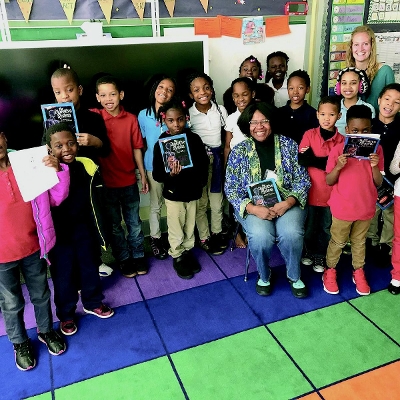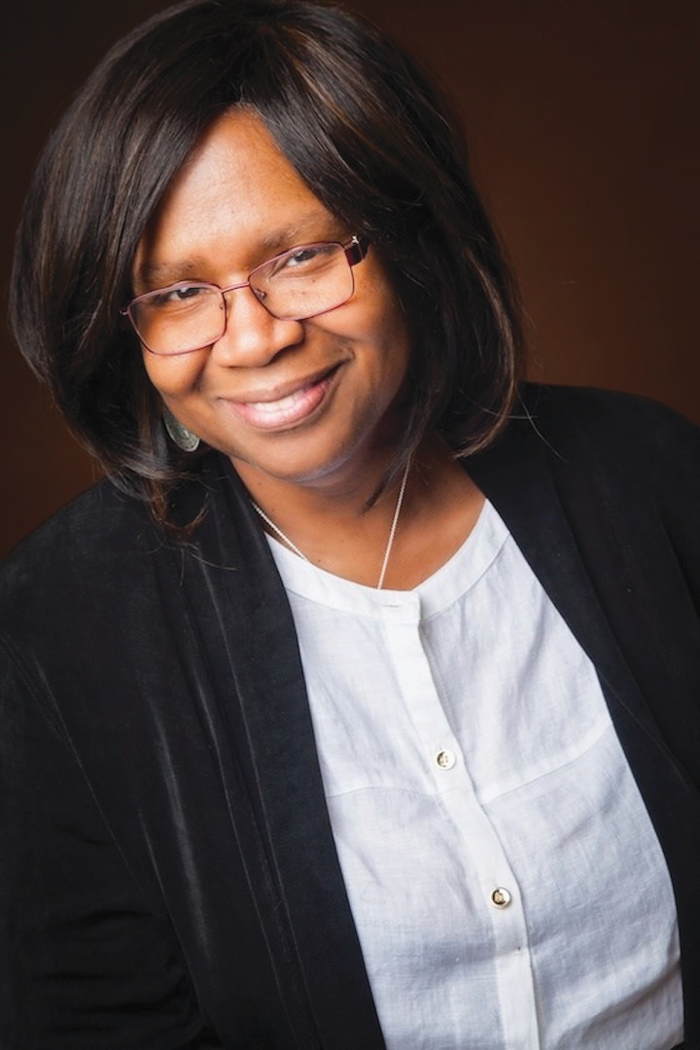When Failure Is Not an Option: Connecting the Dots with STEM
A few years ago, I was asked to give the keynote address as part of a daylong STEM workshop for middle-grade science teachers. I suggested inviting a NASA specialist for a separate virtual session. It wasn’t the first time I’d done that. While conducting a session on planets for fourth graders, I’d invited a NASA specialist to visit the class virtually. I knew these people would be able to answer the questions I couldn’t.
A few years ago, I was asked to give the keynote address as part of a daylong STEM workshop for middle-grade science teachers. I suggested inviting a NASA specialist for a separate virtual session. It wasn’t the first time I’d done that. While conducting a session on planets for fourth graders, I’d invited a NASA specialist to visit the class virtually. I knew these people would be able to answer the questions I couldn’t. In both cases, the specialists explained how science and art are the backbone of NASA. But this one phrase, among others, stood out: Failure is not an option. It is mandatory.
Think about that for a moment — an organization that incorporates failure as part of the job culture. The scientist explained that curiosity was important. You want to know every possible way that something can go wrong before you put a person into space. While managing an applied engineering department at Hallmark Cards, Inc., I once reminded a young engineer that decimal points matter. While no one had ever died from a misprinted greeting card, working outside a narrow margin for error would cost the company millions of dollars over time. Similar errors elsewhere could mean an improper dose at a pharmacy or the difference between the brakes of a car holding or failing in an emergency.
What does this have to do with STEM in children’s literature?
* * *
I’ve been a Massachusetts Institute of Technology (MIT) interviewer for more years than I’ve been a children’s book writer. Over that time, my team has interviewed thousands of high school seniors. Decades ago, curiosity and willingness to fail were part of their ethos. Students reveled in telling me about experiments and mistakes and interesting ideas they developed to fix them. Most were reading well beyond classroom assignments and investigating subjects on their own.
As the years wore on, I saw a shift. It occurred around 2001 when the No Child Left Behind Act introduced the concept of Adequate Yearly Progress. Dry nonfiction texts became the standard in state assessments, and publishers rushed to fill the need. Instead of reading being a source of joy, books became a chore for students to get through in pursuit of an A. Passing an assessment or college entrance exam was now the goal, not the pursuit of knowledge to synthesize concepts and ideas.
This was something I tried to explain to publishers of nonfiction, with mixed success. What we publish matters, but how we do it matters more. The industry underestimates the ability of students, especially younger ones, to internalize and retain complex concepts. At the same time, we have to do a better job of helping young people connect the dots between what they read and how it applies in a broader sense. That means tapping the engineers and scientists already in the field. I use my speaking opportunities to try and restore the spark of curiosity.

Christine Taylor-Butler teaches about The Digestive System.
During our visit with the fourth graders, the NASA expert asked, “What do we add to dehydrated food to make it sticky?” You might think the answer obvious, but the students seemed stuck on it being Elmer’s Glue. The specialist showed photos of water forming spheres in a weightless environment and asked the children if they understood. Seeing looks of confusion, I filled some cups with water and asked the kids to take turns trying to float paper clips on the surface. It’s not as easy as it sounds — but remember the importance of failure! Once that was accomplished, the specialist and I explained how surface tension works on land versus in space. I threw in a video of a basilisk lizard using surface tension to run on water. Afterward, the librarian couldn’t keep the planet books on the shelf.
I use my own book Sacred Mountain: Everest to explain geology, atmospheric changes, and the science of climbing, through simple activities. For example, students hold their breath to demonstrate the body’s response to oxygen deprivation. One day, a kindergarten class and a special education class asked to sit in on a session. The teachers said their students would likely leave early because of attention span. Fast-forward: everyone stayed put. I began receiving packets from teachers writing to say their students were riveted by the presentation. Included were hilarious and heartwarming handwritten notes and detailed stick-figure drawings showing the science facts I’d explained.
There are so many examples of how teachers and students, given support or encouragement, can take a STEM-filled book further than its printed content. In another demonstration, I explain magnets by asking students to make a dollar bill move using only a rare earth magnet. Then I show them how to use the magnets to extract iron from Total cereal. (One kindergartner insisted his mother stop at the grocery store on the way home from school to get the materials!) A teacher at that same school asked her fourth-grade students to solve five challenges I posted as part of a contest for my sci-fi series, The Lost Tribes. My first puzzle?
√-1 √64 ∑ π
She sent photos of the students solving each day’s challenge, which included a jumble, a word search, and a math grid, saying it was a pleasure to not have to teach to the test for a change. Recently MIT featured The Lost Tribes as its all-school read for the Full STEAM Ahead middle-grade summer program. One of the professors created a guide complete with links to Google Earth maps to keep the students immersed in the adventure. And a local community group partnered with an elementary school to create afterschool science activities based on themes from the series.



Experiments with magnets, surface tension, and water density.
Throughout the process, schools express surprise that I teach beyond the content of my books. I laugh and ask, “What did you expect me to be doing?”
* * *
I say this because STEM-based books, whether fiction or nonfiction, don’t seem to garner the level of attention that other books do. And yet, like me, my colleagues go well beyond basic research to create living, breathing experiences for their readers. And while there are many in this field lauded for their nonfiction, despite a lack of technical background, there are many people holding degrees in STEM whose ability to add specificity and depth to their subjects (in a way the others cannot) are overlooked. Not confined to writing nonfiction, they are sometimes found infusing their fiction with rich STEM details that provide breadcrumbs for curious readers to follow.
For example, Cecilia Aragon, PhD, is a full professor at University of Washington’s College of Engineering. The author of Flying Free, she became the first Latina pilot on the U.S. Aerobatic Team; has taught astronauts to fly; and worked with Nobel Prize winners. She also coauthored a statistical analysis of billions of words of YA fanfiction; her article in MIT Technology Review explains her methodology.
Rajani LaRocca, MD, a Harvard-trained physician, deftly explains the complexities of DNA to children in The Secret Code Inside You. She cofounded the STEM Women in KidLit Podcast with author Artemis Roehrig, an entomology technician.
And like me, Varian Johnson holds a BS in civil engineering. His technical background can be seen in his crafting of The Great Greene Heist, a middle-grade caper involving science and tech-savvy kids, as well as The Parker Inheritance, a puzzle-filled mystery.
In an earlier Horn Book article, “Nonfiction Windows So White,” Marc Aronson shared that an editor, working with the Smithsonian and SCBWI, had difficulty finding people of color with technical degrees writing non-historical, STEM-based topics to put on a panel. To which I reply: “Where are you looking?” Our ranks include oceanographers, industrial engineers, music composers, and more. That our existence is overlooked implies the industry still has work to do to value the depth and breadth STEM-trained children’s authors and illustrators bring to the table.
Children deserve to see technically trained authors and illustrators as well as science practitioners who reflect the diverse population around them. We can then skillfully deploy their resources to help readers make future connections on their own. In closing, allow me to amend the NASA philosophy as it applies to the current state of children’s publishing.
Failure is no longer an option.
From the November/December 2021 issue of The Horn Book Magazine.

Add Comment :-
RELATED
ALREADY A SUBSCRIBER? LOG IN
We are currently offering this content for free. Sign up now to activate your personal profile, where you can save articles for future viewing.







